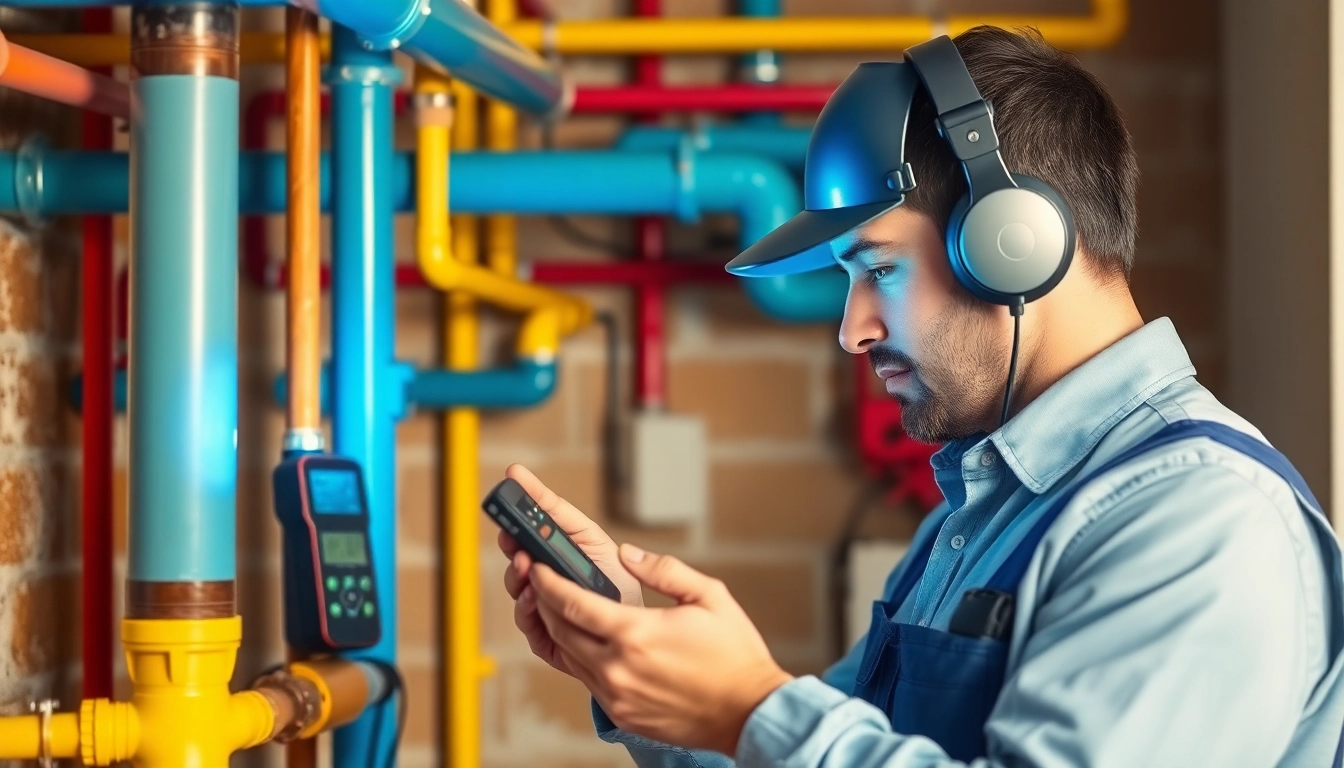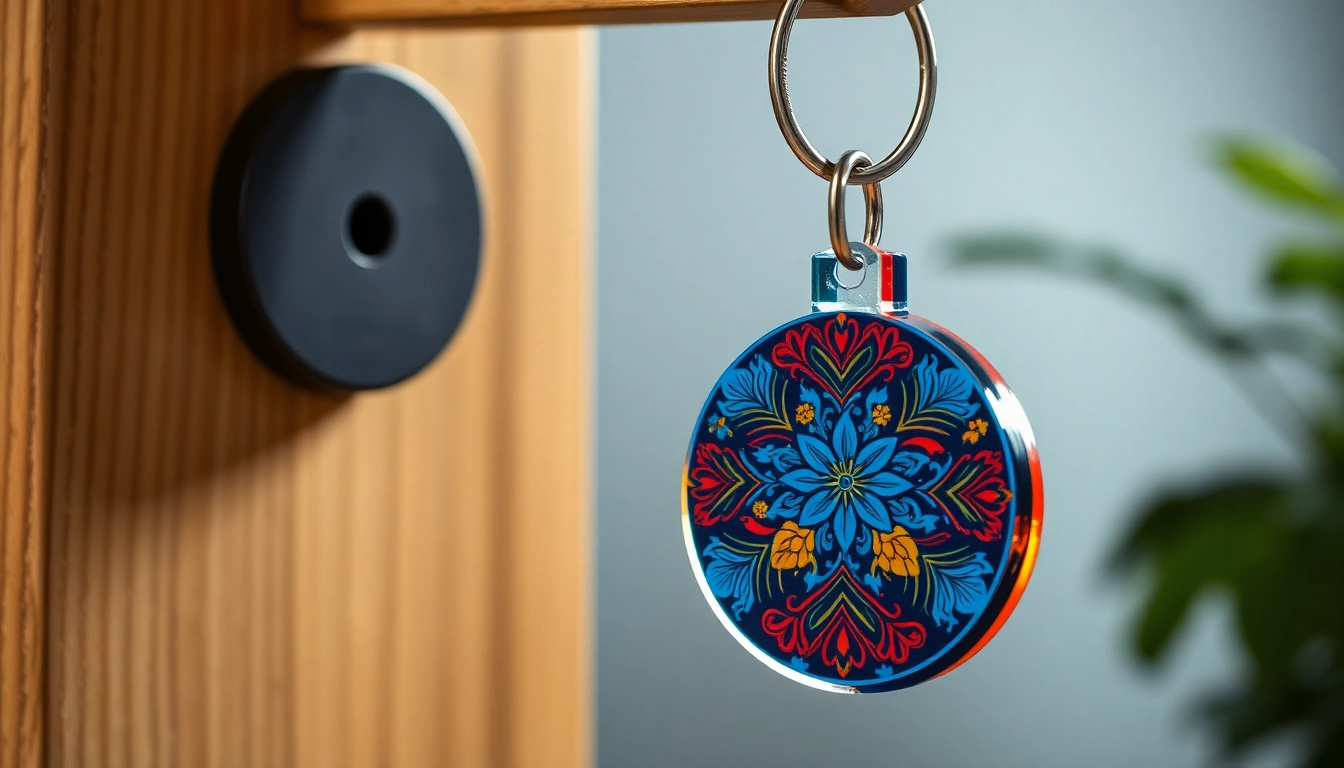Understanding Specialist Leak Detection
What is Specialist Leak Detection?
Specialist Leak Detection refers to the advanced techniques used to identify and locate leaks in plumbing systems, whether they are water, gas, or sewer leaks. These techniques are employed by trained professionals equipped with specialized tools and technologies designed to find hidden leaks that are otherwise difficult to detect. Unlike traditional plumbing services, specialist leak detectors focus exclusively on leak identification, often utilizing non-invasive methods to ensure that the structural integrity of a building remains intact during the inspection process.
The Importance of Timely Leak Detection
Detecting leaks early is crucial for several reasons. Firstly, even a small leak can lead to significant water damage over time, resulting in expensive repairs. Secondly, leaks can contribute to higher water bills and increased energy consumption, especially if the leak is in a gas line. Moreover, prolonged exposure to water can lead to mold growth, which poses health risks. Thus, employing Specialist Leak Detection services not only prevents immediate financial losses but also safeguards the health of occupants and the overall integrity of the property.
How Specialist Leak Detection Works
The process of leak detection incorporates a variety of methods and technologies tailored to identify the specific types of leaks present. Techniques can include pressure testing, thermal imaging, acoustic listening devices, and even video camera inspections of plumbing systems. Each method has its own applications, effectiveness, and suitability depending on the circumstances surrounding the leak. Professionals begin with a thorough assessment to pinpoint the source of the leak, followed by the implementation of the appropriate technique for accurate location and assessment.
Common Leak Detection Methods
Non-Invasive Techniques in Specialist Leak Detection
Non-invasive techniques have revolutionized how leaks are detected across various plumbing systems. Non-invasive leak detection methods include:
- Acoustic Sensors: These devices listen for the sounds of leaks within pipes. They can detect the high-frequency sounds that are often emitted from pressurized water escaping from a damaged pipe.
- Thermal Imaging: This technology captures images of temperature variations. Leaks often create colder spots in walls or floors where water has accumulated, making it an effective detection method.
- Moisture Meters: These tools measure the moisture levels in materials and can help identify damp areas indicating potential leaks.
Acoustic and Thermal Imaging Methods
Two of the most effective methods in specialist leak detection are acoustic and thermal imaging techniques. Acoustic leak detection involves listening devices that amplify the sounds of fleeing water. These sounds can be pinpointed to specific locations, allowing technicians to address the problem directly without invasive digging or demolition.
Thermal imaging uses infrared cameras to detect temperature changes in surfaces. When water leaks from pipes, it usually cools the surrounding material, thus creating a thermal signature that can be visualized. By combining these methods, technicians can achieve a high level of accuracy in locating leaks quickly and efficiently.
Choosing the Right Method for Your Needs
The method selected for leak detection often depends on the type of leak suspected, the environment, and the resources available. For instance, if the leak is suspected in an area with heavy traffic or dense insulation, thermal imaging may be ideal. Conversely, for leaks in pipes behind walls, acoustic methods may prove more effective. It is crucial to consult with a specialist who can evaluate the situation and determine the most appropriate method for leak detection based on specific needs.
Challenges in Leak Detection
Identifying Hard-to-Detect Leaks
Not all leaks are created equal; some are blatantly obvious, while others can be incredibly elusive. Common challenges in identifying hard-to-detect leaks include:
- Location of the leak: Leaks hidden behind walls or under floors can go unnoticed for extended periods.
- Diminishing signs: Some leaks may present subtle indicators such as damp patches or smell, making them easy to overlook.
For this reason, experienced leak detection specialists utilize a blend of methods and tools to accurately diagnose the source of a leak, ensuring that even the most concealed issues are uncovered.
Water vs. Gas Leak Detection
While both water and gas leaks require prompt attention, their detection involves different techniques and safety measures. Water leaks can often lead to structural damage and mold, while gas leaks pose immediate safety hazards, such as fire or explosion risks. Identifying gas leaks typically involves specialized detection equipment that can identify the presence of gas in the air, while water leaks might leverage the abovementioned techniques such as acoustic sensors and thermal imaging.
Addressing Common Customer Concerns
Customers often have concerns, including potential damages from the detection process and the overall cost. It is essential for leak detection specialists to communicate their methods clearly, ensuring customers that non-invasive techniques are a possible approach, minimizing the risk of additional damage. Detailed estimates should also be provided, outlining the costs associated with both the detection services and any subsequent repairs. Open communication fosters trust and helps ease apprehensions regarding the process.
Best Practices for Leak Prevention
Regular Maintenance Checks
Regular inspections and maintenance checks are critical elements in preventing leaks. Homeowners should schedule routine plumbing assessments, especially in older homes where the risk of leaks is often higher due to aging infrastructure. A simple service plan that includes checking for corrosion, seal wear, and fixture integrity can catch potential problems before they escalate into significant leaks.
Upgrading Old Plumbing Systems
Investing in modern plumbing materials and fixtures can vastly reduce the risk of leaks. Older pipes, particularly those made from materials like galvanized steel or cast iron, are more susceptible to corrosion over time. Replacing these with high-quality materials such as copper or PVC reduces the likelihood of future leaks, prolonging the lifespan of the system and enhancing overall property value.
Utilizing Monitoring Technology
Smart leak detection technology has emerged as a proactive solution for homeowners and businesses alike. Many systems can monitor water usage, detect anomalies, and alert homeowners immediately. Flood sensors, smart meters, and leak detection alarms not only provide real-time data but can also prevent extensive water damage by shutting down systems or alerting users before the issue escalates. Implementing this technology can be a game-changer in maintaining optimal property conditions.
Measuring the Success of Leak Detection
Key Performance Indicators in Specialist Leak Detection
The effectiveness of leak detection efforts can be measured through several key performance indicators (KPIs). These include:
- Response time to leak detection: How quickly issues are identified.
- Detection accuracy: The rate at which detected leaks lead to necessary repairs.
- Customer feedback: Gathering input on service satisfaction can help improve practices and pinpoint areas for optimization.
Customer Satisfaction Metrics
Understanding and assessing customer satisfaction is crucial for any leak detection service. Surveys and follow-ups should be a standard practice to gauge the overall experience, from the initial contact to the eventual resolution of their leak issues. Addressing customer concerns and adjusting practices based on feedback not only improves service but also enhances the company’s reputation within the industry.
Long Term Savings from Effective Leak Detection
Utilizing specialist leak detection services can lead to significant long-term savings for homeowners and businesses. By identifying problems early, costly repairs can be minimized, and energy efficiency can be improved, leading to lower utility bills. Investment in leak detection not only pays for itself over time but also adds value to properties by maintaining their condition and structure.



